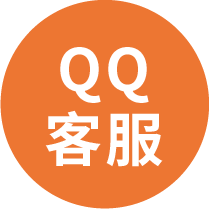KCNQ1 Mouse Monoclonal Antibody [Clone ID: S37A-10]
CNY 5,830.00
货期*
4周
规格
| Cited in 1 publication. |
经常一起买 (2)
Specifications
| Product Data | |
| Clone Name | S37A-10 |
| Applications | IHC, WB |
| Recommend Dilution | WB: 1-10ug/ml, IHC: 0.1-1.0ug/ml, IF: 1.0-10ug/ml |
| Reactivity | Human, Mouse, Rat |
| Host | Mouse |
| Clonality | Monoclonal |
| Immunogen | Fusion protein amino acids 2-101 of human KCNQ1 |
| Formulation | PBS pH7.4, 50% glycerol, 0.09% sodium azide |
| Concentration | lot specific |
| Purification | Protein G Purified |
| Conjugation | Unconjugated |
| Storage Condition | Store at -20°C as received. |
| Gene Name | potassium voltage-gated channel subfamily Q member 1 |
| Database Link | |
| Background | Ion channels are integral membrane proteins that help establish and control the small voltage gradient across the plasma membrane of living cells by allowing the flow of ions down their electrochemical gradient . They are present in the membranes that surround all biological cells because their main function is to regulate the flow of ions across this membrane. Whereas some ion channels permit the passage of ions based on charge, others conduct based on a ionic species, such as sodium or potassium. Furthermore, in some ion channels, the passage is governed by a gate which is controlled by chemical or electrical signals, temperature, or mechanical forces.There are a few main classifications of gated ion channels. There are voltage- gated ion channels, ligand- gated, other gating systems and finally those that are classified differently, having more exotic characteristics. The first are voltage- gated ion channels which open and close in response to membrane potential. These are then separated into sodium, calcium, potassium, proton, transient receptor, and cyclic nucleotide-gated channels; each of which is responsible for a unique role. Ligand-gated ion channels are also known as ionotropic receptors, and they open in response to specific ligand molecules binding to the extracellular domain of the receptor protein. The other gated classifications include activation and inactivation by second messengers, inward-rectifier potassium channels, calcium-activated potassium channels, two-pore-domain potassium channels, light-gated channels, mechano-sensitive ion channels and cyclic nucleotide-gated channels. Finally, the other classifications are based on less normal characteristics such as two-pore channels, and transient receptor potential channels .Specifically, Kv7.1 (KvLQT1) is a potassium channel protein coded for by the gene KCNQ1. Kv7.1 is present in the cell membranes of cardiac muscle tissue and in inner ear neurons among other tissues. In the cardiac cells, Kv7.1 mediates the IKs (or slow delayed rectifying K+) current that contributes to the repolarization of the cell, terminating the cardiac action potential and thereby the hearts contraction . |
| Synonyms | ATFB1; ATFB3; JLNS1; KCNA8; KCNA9; Kv1.9; Kv7.1; KVLQT1; LQT; LQT1; RWS; SQT2; WRS |
| Note | Detects ~75kDa. |
| Reference Data | |
| Protein Families | Druggable Genome, Ion Channels: Potassium, Transmembrane |
| Protein Pathways | Vibrio cholerae infection |
Citations (1)
| The use of this Antibodies has been cited in the following citations: |
|---|
|
KCNQ1, KCNE2, and Na+-Coupled Solute Transporters Form Reciprocally Regulating Complexes that Affect Neuronal Excitability
,null,
Science signaling
,PubMed ID 24595108
[KCNQ1]
|
Documents
| Product Manuals |
| FAQs |
| SDS |
Resources
| 抗体相关资料 |
Customer
Reviews
Loading...


 United States
United States
 Germany
Germany
 Japan
Japan
 United Kingdom
United Kingdom
 China
China




